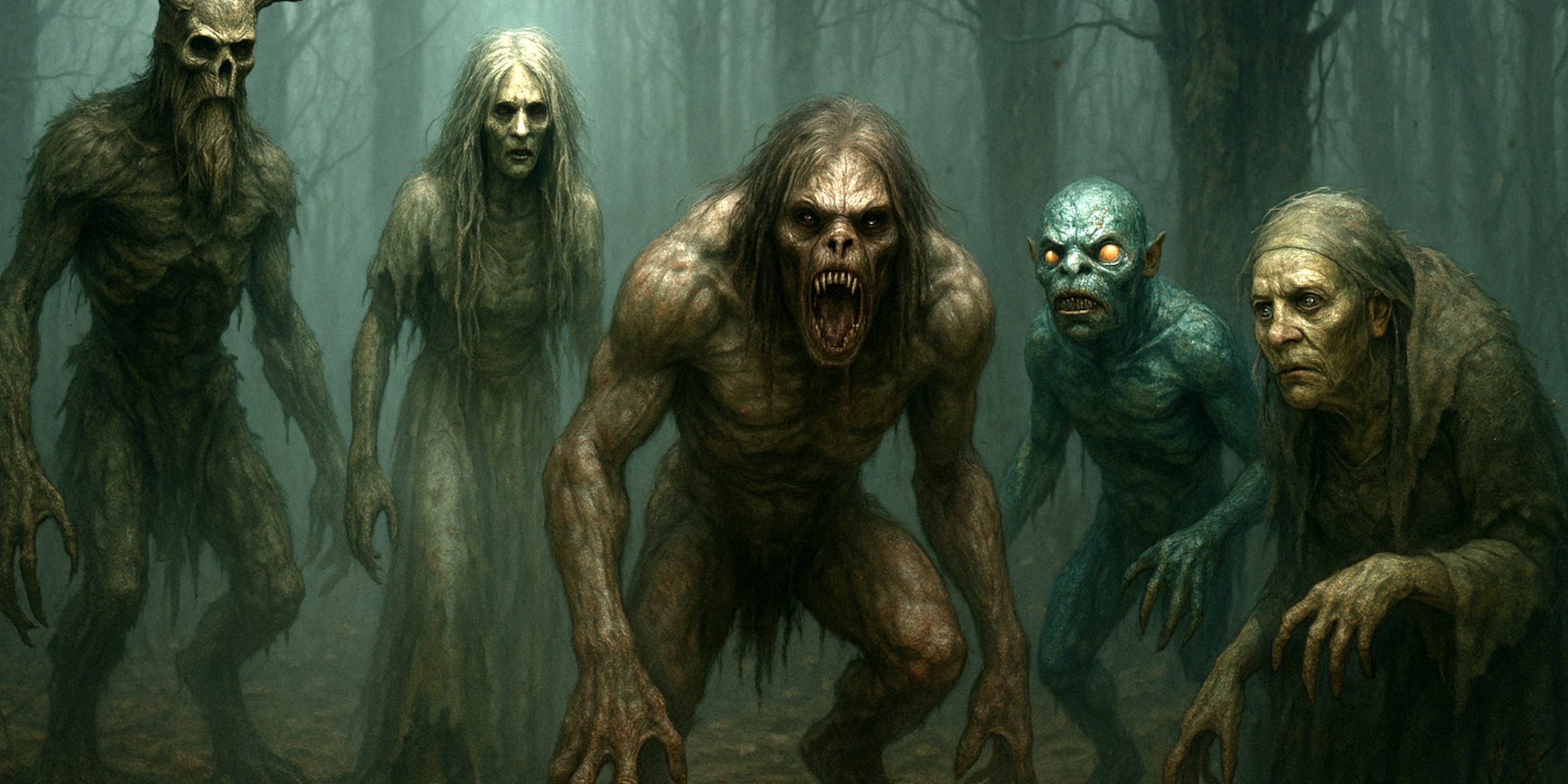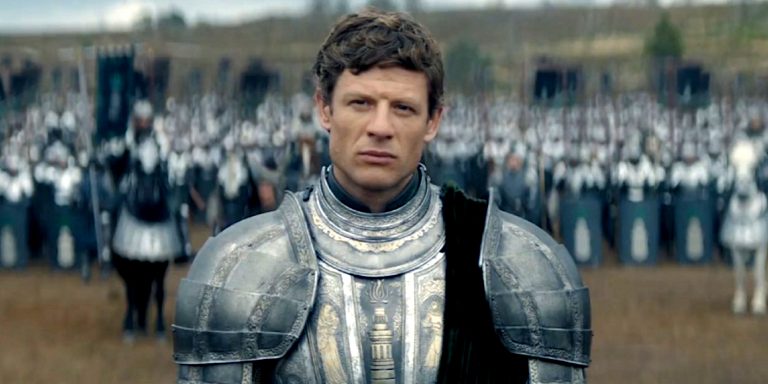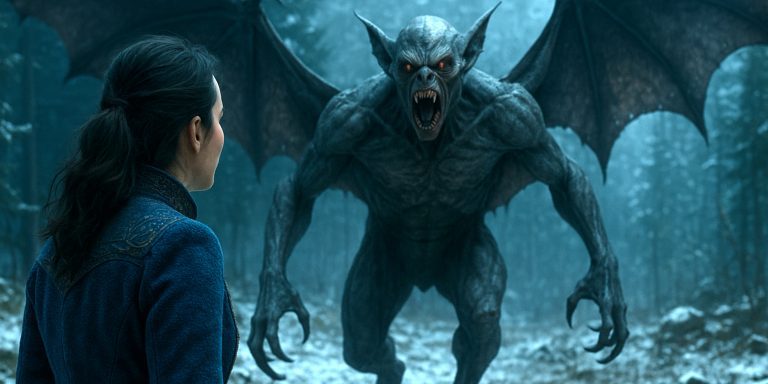
If there’s one thing The Witcher absolutely nails, it’s monsters that feel like they could exist. They’re weird, creepy, and just grounded enough in old folklore that you can almost imagine bumping into one on a foggy night in rural Poland. Turns out, that’s not an accident. Many of the beasts Geralt faces were pulled straight from real world myths and legends. Let’s dig into the lore behind some of The Witcher’s most iconic creatures and where they really came from.
The Leshen – Season 2, Episode 4: “Redanian Intelligence”
The Leshen (or Leshy as it’s called on-screen) appears briefly in Season 2, when Eskel, a witcher from Kaer Morhen, becomes infected and transformed into one. It’s a huge departure from the books and myth: the Leshen is less a forest guardian and more a parasitic force that warps humans into monsters.
Faithfulness: Loosely based on the myth.
TV portrayal: Parasitic forest creature; spreads infection through roots and spores.
Myth/Book counterpart: An ancient forest spirit that punishes intruders and guards nature.
It’s a striking sequence, but fans of the games will notice that Netflix’s version dropped the elegant mysticism for something far more body-horror.
Noonwraiths – Season 1, Episode 3: “Betrayer Moon” (Indirectly Referenced)
The show doesn’t feature a full Noonwraith encounter, but the haunting aesthetic and behaviour of wraiths in general (like the Striga and other cursed spirits) borrow heavily from this myth. The spectral visuals, drifting, transparent figures haunting ruins and fields, clearly nod to the Poludnica legend.
Faithfulness: Thematically accurate.
TV portrayal: None directly, but visual echoes in ghostly curses and spectral hauntings.
Myth/Book counterpart: A vengeful field spirit appearing at midday.
A Noonwraith-style ghost would fit perfectly in future seasons, think haunting sunlight instead of midnight fog.
Striga – Season 1, Episode 3: “Betrayer Moon”
This is the monster that put Geralt on the map. The Striga in Episode 3 is Princess Adda, cursed by incest and jealousy. Geralt must break the curse by keeping her from her coffin until dawn, a near frame-for-frame recreation of Sapkowski’s original short story.
Faithfulness: Exceptionally close to both book and myth.
TV portrayal: A tragic royal curse with monstrous transformation.
Myth/Book counterpart: A vampiric creature born from a cursed or stillborn child.
This episode nails the tone: equal parts horror, tragedy, and redemption. It’s The Witcher’s folklore at its purest.
Kikimora – Season 1, Episode 1: “The End’s Beginning”
The show opens with a Kikimora battle, literally the first thing we see Geralt do. He kills it in a swamp before dragging the corpse to Blaviken for coin.
Faithfulness: Inspired more by the name than the myth.
TV portrayal: A huge spider-like insect with multiple legs and mandibles.
Myth/Book counterpart: A house spirit that can be both helpful and harmful, haunting domestic spaces.
Netflix went full monster-movie for this one. The Kikimora on-screen feels more like something out of Alien than an old house spirit, but it’s a great cold open that sets the tone.
Drowners – Season 2, Episode 1: “A Grain of Truth” (Background)
Drowners appear fleetingly throughout the series, you’ll catch glimpses of their corpses or hear of them in dialogue, but they haven’t had a major spotlight. They show up more in The Witcher: Blood Origin and are common in the world’s ecology.
Faithfulness: Visually true to the games, not myth-heavy.
TV portrayal: Swamp-dwelling, waterlogged humanoids.
Myth/Book counterpart: Spirits of drowned souls (like utopce or vodník).
The show treats them as “background monsters” rather than narrative symbols, but the mythic DNA is there if you squint.
The Bruxa – Season 2, Episode 1: “A Grain of Truth”
Now this one’s special. The Bruxa in Season 2’s opener is based directly on Sapkowski’s short story A Grain of Truth. Geralt encounters Vereena, a vampire who can transform into a bat-like creature and shriek her enemies to death.
Faithfulness: High.
TV portrayal: Seductive, terrifying, and deeply tragic.
Myth/Book counterpart: A blood-drinking, shapeshifting female vampire from Portuguese and Slavic lore.
The show’s interpretation is stylish and intimate, part gothic horror, part doomed love story. One of the best adaptations of Witcher folklore yet.
The Water Hag – Not Yet Featured, Possibly Forthcoming
Although we haven’t seen a classic Water Hag or Baba Yaga-type creature yet, the Netflix prequel The Witcher: Blood Origin and upcoming The Rats spinoff might change that. Hags fit perfectly into the dark fairytale tone of the series, and given the series’ love for Slavic myth, it’s only a matter of time.
Faithfulness: Not yet applicable.
Likely portrayal: A grotesque crone tied to decaying nature or cursed swamps.
Myth/Book counterpart: Rooted in the Baba Yaga archetype, the archetypal witch of Eastern Europe.
Expect her to show up at some point with questionable soup and even worse intentions.
Bonus Mentions
- The Leshy in The Witcher: Blood Origin (2022) – Reappears briefly, showing its power to manipulate the environment.
- Witcher 3 crossovers – The show’s monster designs borrow more from CD Projekt Red’s visual canon than direct folklore, explaining the insectoid Kikimora or skeletal Leshen aesthetic.
Seven Swords Takeaway
The Witcher’s Netflix series has walked a fine line between folklore and spectacle. Some creatures stay true to their cultural origins, like the Striga and Bruxa, while others lean into cinematic horror. Either way, the DNA of Slavic myth remains unmistakable, from haunted forests to cursed royalty.
And that’s what keeps The Witcher fascinating: every monster feels like a whisper from an older world, reimagined for modern fantasy without losing its roots.



